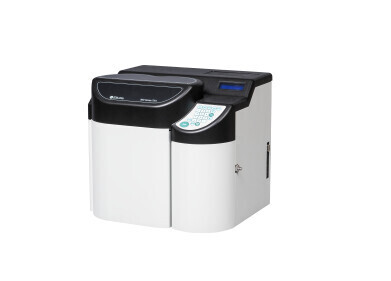Gas Chromatography
How is Chromatography Used for Oil Exploration?
Mar 31 2021
The search for oil and gas is a complex effort lead by petroleum geologists and geophysicists. They are searching deep under the ground or seabed for the microscopic remains of tiny plants and animals that lived millions of years ago. Our dependency on oil and gas, or fossil fuels, might be on the wane in some sectors such as vehicle fuel and energy supply, but oil and gas are still going to be needed as they provide the basic feedstocks of many of the chemicals that build our world. So, let's take a quick look at one of the ways that chromatography can help scientists find oil.
Forming the oil
Oil comes from the fossilized remains of tiny plants and animals that died in seas and oceans between 10 million and 600 million years ago. As they died, they sank to the bottom and became buried under sand and mud. The organisms decayed over the years and microorganisms broke them down in the oxygen poor environment. The organic material mixed with sediments and the sedimentary rock shale was formed.
More layers formed on top, and this increased the pressure and heat on the shale - or source rock - which resulted in the organic matter in the shale breaking down into oil and gas. These flowed from the source rock and collected in more porous limestone or sandstone forming reservoirs captured between layers of impermeable rock.
Finding the oil
Finding oil and gas deposits is where the geophysicists and petroleum geologists really earn their money. They first identify where oil might be trapped. This means that the right types of source rock and reservoir rock along with some means of trapping the oil, the impermeable rock, must be present. This analysis is carried out using seismometers, gravity meters and satellite images.
The next stage is to obtain samples of the rocks, mud, and any oils. These samples can then be examined and analysed using gas chromatography with a flame ionisation detector (GC-FID). To get a better GC chromatogram have a look at the article, Gas Chromatography Troubleshooting Part 1 – Peak Shape Issues. Gas chromatography can give the exploration team a picture of what is down there including the source of the oil, how old it is and what contamination there is. Using this information, the oil exploration team can make an analysis of how much oil there is down there and more importantly, how much oil they can recover commercially.
Oil might not be everyone cup of tea, but without oil – and oil exploration and chromatography – many of the things we take for granted in our everyday lives but become scarcer. No iPads, smartphones, or electric cars.
Events
Jan 20 2025 Amsterdam, Netherlands
Feb 03 2025 Dubai, UAE
Feb 05 2025 Guangzhou, China
Mar 01 2025 Boston, MA, USA
Mar 04 2025 Berlin, Germany














